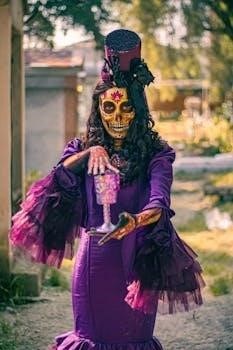Vida y Muerte en la Mara Salvatrucha⁚ A Comprehensive Overview
This section provides a broad look into the complex world of Mara Salvatrucha (MS-13). It explores the themes of life and death within the gang. We will examine the challenges, violence, and the ever-present reality of mortality.
Mara Salvatrucha, commonly known as MS-13, stands as one of the most notorious and violent transnational criminal organizations. Its roots trace back to Los Angeles, California, where it emerged in the 1980s among Salvadoran immigrants seeking protection from other established gangs. Over time, MS-13 evolved from a street gang into a sophisticated criminal enterprise. They engage in a wide array of illegal activities, including drug trafficking, extortion, and murder.
MS-13’s influence extends throughout the United States, Central America, and even parts of Canada and Europe. The gang is characterized by its brutal methods, strict code of silence, and unwavering loyalty among its members. Initiation into MS-13 often involves violent acts. Members are expected to demonstrate their commitment to the gang.
The gang’s presence has had a profound impact on communities, particularly in El Salvador. MS-13’s activities contribute to high levels of violence, instability, and fear. Despite efforts by law enforcement agencies, MS-13 continues to pose a significant challenge to public safety and security in many regions.
Origins and History of MS-13

The story of Mara Salvatrucha begins in the vibrant yet turbulent streets of Los Angeles during the 1980s. The gang emerged as a means of self-preservation for Salvadoran immigrants. They were fleeing the civil war in their homeland. These refugees found themselves vulnerable to established gangs in the city. The initial purpose was to protect themselves from rival groups. MS-13 gradually transformed into a formidable force.
Several factors contributed to the gang’s evolution. The influx of Salvadoran refugees, many of whom had military experience, provided a pool of potential recruits. Additionally, the lack of economic opportunities and social integration fueled the gang’s growth. MS-13’s early activities primarily revolved around petty crime and street brawls. Over time, MS-13 expanded its operations to include drug trafficking, extortion, and other lucrative criminal enterprises.
The gang’s name, Mara Salvatrucha, is believed to be a combination of “mara,” referring to a gang, “Salva” from Salvadoran, and “trucha,” a slang term for being sharp or alert. The number 13 is also significant, representing the letter “M,” the 13th letter of the alphabet, and a symbol of allegiance to the Mexican Mafia.

MS-13’s Expansion from Los Angeles to Central America
MS-13’s influence spread beyond the borders of Los Angeles, reaching into the heart of Central America. A key factor in this expansion was the deportation of gang members back to their home countries. This process, intended to curb gang activity in the US, inadvertently seeded MS-13 in El Salvador, Honduras, and Guatemala.
Deported members, hardened by their experiences in the Los Angeles gang scene, brought with them a culture of violence and criminal expertise. They quickly established MS-13 chapters in their respective countries. The existing social and economic conditions in Central America provided fertile ground for the gang’s growth. Poverty, corruption, and weak governance created a vacuum that MS-13 readily filled.
The gang’s presence in Central America had a devastating impact. MS-13 became deeply involved in drug trafficking, extortion, and other illicit activities. The violence associated with the gang destabilized communities. It instilled fear in the population. The expansion of MS-13 transformed it from a local street gang into a transnational criminal organization. The gang’s influence continues to be felt throughout Central America.
Life Within MS-13⁚ Initiation and Responsibilities
Joining MS-13 is a life-altering decision, marked by a brutal initiation process and a strict set of responsibilities. Aspiring members, often young and vulnerable, must prove their loyalty and commitment through violent acts. This can include robbery, assault, or even murder. The initiation, often a gang beating, solidifies their place within the group. It symbolizes their entry into a new world.
Once initiated, members are expected to adhere to the gang’s code of conduct and follow orders without question. Responsibilities vary depending on rank and experience. They can include drug dealing, extortion, recruitment, and enforcing the gang’s will. Disobedience or betrayal is met with severe consequences. This often involves violence or even death.
Life within MS-13 is characterized by constant danger and a lack of freedom. Members are always at risk of arrest, violence from rival gangs, or internal conflict. The gang becomes their primary family. It offers a sense of belonging. This is often appealing to those who have experienced neglect or abuse. Escape from MS-13 is difficult. It is dangerous, as defectors are often marked for death;
The Culture of Violence in MS-13
Violence is deeply embedded within the culture of MS-13, serving as a means of control, intimidation, and enforcement. It’s a tool for maintaining power, both within the gang and in the communities they control. Acts of brutality are not only accepted but often encouraged. They serve as a way for members to prove their loyalty and commitment to the group. This perpetuates a cycle of violence.
The gang’s reputation for extreme violence is a key element of its power. It instills fear in rivals, law enforcement, and ordinary citizens. This makes it easier to carry out criminal activities and maintain control over territories. Violence is often ritualized. Specific acts of violence are used to send messages to enemies or punish those who have violated gang rules.
Within MS-13, violence is often seen as a sign of strength and masculinity. Members are expected to be fearless and willing to use force to defend the gang’s interests. This creates a hyper-masculine environment. It discourages empathy and promotes aggression. The constant exposure to violence desensitizes members, making it easier for them to commit increasingly brutal acts.
Death and its Significance in the Gang
Death holds a unique and grim significance within MS-13. It’s not merely an end but a constant presence shaping the lives and actions of its members. The threat of death, both for those within and outside the gang, is a powerful tool used for control and intimidation. Members are expected to be willing to die for the gang, solidifying loyalty.
The death of a member can trigger retaliatory actions, perpetuating a cycle of violence. These acts serve as a demonstration of the gang’s power and commitment to its own. Funerals for fallen members often become displays of gang solidarity and recruitment opportunities. The glorification of violence and death is a recurring theme.
Death is also a punishment for those who betray the gang or violate its rules. This could involve anything from theft to cooperating with law enforcement. The consequences are often swift and brutal. The fear of such retribution keeps members in line. For those seeking to leave, death is a very real and constant threat, making escape incredibly difficult.
Rivalries with Other Gangs, Particularly Barrio 18
MS-13’s existence is intertwined with intense rivalries, most notably with Barrio 18 (also known as Calle 18). This feud fuels much of the violence associated with both gangs. The conflict stems from competition for territory, drug trafficking routes, and overall dominance in the criminal underworld. The rivalry has a long history, dating back to the gangs’ origins in Los Angeles.
The competition between MS-13 and Barrio 18 often manifests in brutal acts of violence. These acts serve to assert dominance and instill fear in rival gang members and communities. The territorial disputes lead to constant clashes and bloodshed. The recruitment strategies of both gangs exacerbate the conflict, as they target vulnerable youth and indoctrinate them into a life of violence.
The rivalry extends beyond physical confrontations. It also involves a constant struggle for influence within prisons and on the streets. The battle for control over illicit activities further intensifies the animosity. The ongoing conflict has had a devastating impact on communities caught in the crossfire.
MS-13’s Presence in El Salvador

El Salvador has become a stronghold for MS-13, significantly impacting the nation’s security and stability. The gang’s presence in El Salvador is a direct result of deportation policies in the United States. These policies led to the return of gang members to their countries of origin. This influx of experienced criminals contributed to the expansion of MS-13 in El Salvador.
The gang exerts considerable control over many communities. They do this through intimidation, extortion, and violence; MS-13’s activities have created a climate of fear. This climate hinders economic development and disrupts social order. The gang’s influence extends to various sectors, including transportation, local businesses, and even politics.
The Salvadoran government has struggled to effectively combat MS-13. The gang’s deep roots within communities and its sophisticated organizational structure pose significant challenges. Efforts to dismantle MS-13 have often been met with resistance and further violence. The ongoing struggle has resulted in a humanitarian crisis, with many Salvadorans fleeing their homes to escape gang violence;

Impact of MS-13 on Communities
MS-13’s presence casts a long shadow over communities, creating an environment of fear and instability. The gang’s activities disrupt daily life. They do this by undermining social structures. Extortion, a common tactic, forces businesses and residents to pay for protection. Refusal often leads to violence or death. This creates a climate of economic hardship.
The gang’s recruitment practices target vulnerable youth, offering them a sense of belonging and power. This draws them into a life of crime and violence. Schools become recruiting grounds. This robs children of their futures. The constant threat of violence forces families to flee their homes, leading to displacement and a breakdown of community bonds.
The psychological impact on residents is profound, with many experiencing trauma, anxiety, and depression. The gang’s control over territory limits access to essential services, such as healthcare and education. This perpetuates a cycle of poverty and despair. The erosion of trust between community members further isolates individuals and weakens collective efforts to resist gang influence.
Efforts to Combat MS-13
Combating MS-13 requires a multifaceted approach that addresses both the symptoms and root causes of gang violence. Law enforcement agencies focus on disrupting gang operations through arrests and prosecutions. These initiatives often involve international cooperation to target transnational criminal activities. However, a purely repressive approach is insufficient.
Prevention programs play a crucial role in deterring youth from joining gangs. These programs offer mentorship, educational opportunities, and job training. They provide alternatives to gang life. Community-based initiatives aim to strengthen social bonds and create safe spaces. This empowers residents to resist gang influence.
Rehabilitation programs offer gang members a path to exit the gang. These programs provide counseling, education, and vocational training. They help individuals reintegrate into society. Addressing the underlying issues of poverty, inequality, and lack of opportunity is essential for long-term success. International efforts focus on supporting Central American countries in strengthening their institutions and addressing the root causes of migration and gang violence.
